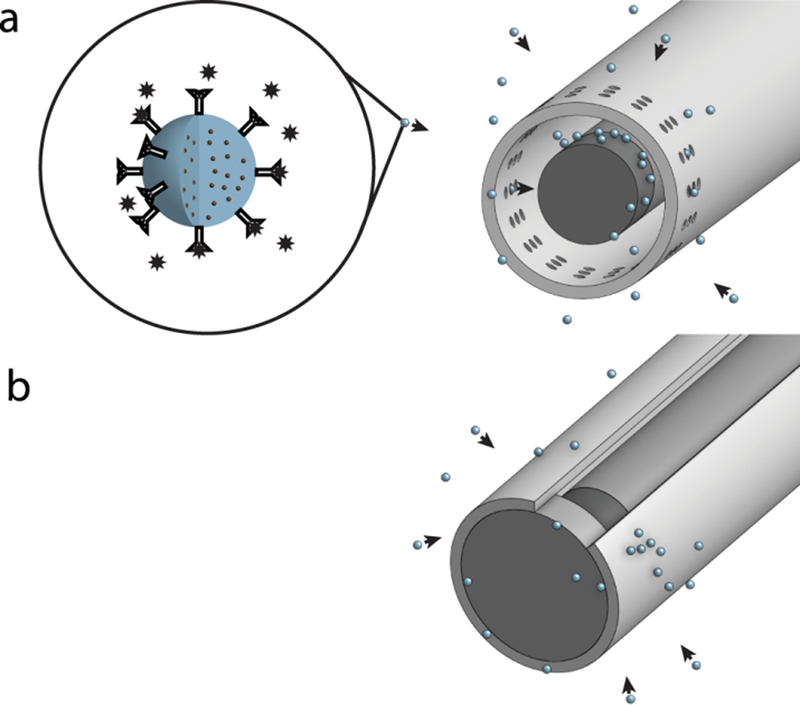Figure 1. Magnetic capture.
a) Magnetic capture from rat knees.
Biotinylated antibody specific to CCL2 was conjugated to the surface of spherical particles, 1 μm in diameter (zoomed image on the left). The particles contained superparamagnetic nanoparticles embedded within a polymer core. These anti-CCL2 particles were used for all in vitro and in vivo experiments. For collection of anti-CCL2 particles from rat knees, a cylindrically shaped NdFeB magnet (1.0 mm diameter by 1.0 mm length) was attached to a soft magnetic rod and placed inside a 16G catheter, in which small (0.1–0.2 mm) holes were made near the magnet position. The holes in the catheter allowed particles to bind directly to the magnet and protected particles from being wiped from the magnet while the magnetic probe was removed from the knee.
b) In vitro magnetic particle collection.
For in vitro magnetic particle collection, a cylindrically shaped NdFeB magnet (0.75 mm diameter by 1 mm length) on a soft magnetic rod was used. The magnet was placed inside an 18G catheter with no holes. The catheter opening was closed with a rubber cork so particles could not penetrate directly to the magnet. Instead, particles accumulated on the outer surface of the catheter. This allowed particles to be rapidly removed from the catheter via vortexing after the magnet was removed from inside of the catheter.

